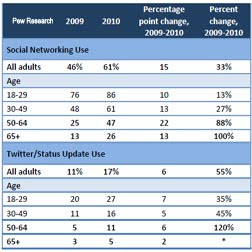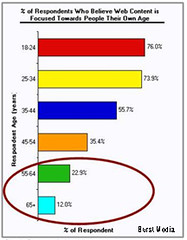While some luxury brands continue to express interest in courting Generation Y, a demographic loosely defined as those born between 1977 and 1994 in the United States, other brands are setting their sights on another segment all together. They see the next surge in luxury consumers not confined to American Millennials but driven by emerging markets such as India and South Africa.
One new study, Wealth X, sees India producing as many as 437,000 millionaires by 2018 (and doubling again by 2023).The nation also has a young, well-educated population with high levels of entrepreneurship and business ownership, underpinned by a well-developed legal system.
Wealth growth in Africa — especially markets such as South Africa, Nigeria and Kenya — continues to be driven by a naturally entrepreneurial population at an annual rate of over 10 percent. Not only are those markets rich in natural resources, but they also have a new foundation for technological innovation.
In addition, the study predicts Iran, Turkey, and Mexico will become economic bright spots among global markets. These markets will continue to be influenced by western European and North American definitions of luxury (including a shift from physical luxury to experiential luxury.)
Five behavioral shifts expected from emerging markets.
• Hyper-Localization. Although the world is shrinking, wealthy consumers are identifying with the cities where they work and live (and not necessarily their countries). As a result, brands need to prepare for an increasingly nonlinear development of economies and wealth creation as well as the important role proximity advertising and marketing will play in reaching those new millionaires.
• New Frontiers. An increase in new wealth will continue to drive a growing early adopter segment hungry for new experiences. In addition to new frontier experiences such as space tourism and global investment opportunities cited in the study, pay attention to augmented and virtual reality space.
• Luxury Experiences. Millennials are not the only population segment that is more interested in experience over products. The rich in emerging markets are increasingly shifting luxury consumption away from product purchases to lavish experiences like extreme locations and underwater holidays.
• Hyper-Personalization. As well as fundamental rarity, personalization is expected to become the second major driver of exclusivity in the next decade. This will continue to manifest in tailored and unique products as well as one-off experiences.
• Privacy and Intimacy. There will be an increasing desire for privacy among the wealthy in the future, yet at the same time a desire for greater intimacy among the select providers they trust. As a brand is truly defined by the relationship between itself and its customers, the newly rich will look for near flawless experiences from a shrinking pool of brands they trust.
These behavioral shifts will have a profound effect on brands.
These are not the only shifts expected in the attitudes and psychology of the emerging wealthy. The study predicts those joining the ranks of the wealthy will become increasingly concerned about the economy, geopolitics, wealth preservation, privacy, and health care options.
With the recent financial crisis still fresh in their minds, they will be keenly sensitive to issues such as wealth preservation and the return on investment in every area of their lives from financial holdings to how they spend family holidays. At the same time, as wealth continues to become globalized, there will be an increased demand for personalization with design eclipsing technology and exclusivity defined by something other than price point alone.
The Wealth-X Part II study, which covers the next 10 years of wealth and luxury, is currently available without a registration barrier. In review, many of the concepts presented in the study are not confined to having an impact on luxury brands alone. As an emerging class of globalized rich continues to emerge, their behaviors will have a significant influence over consumer expectation on all organizations — especially in hyper-localized minded cities with increasingly unique identities.
Marketers hoping to find opportunities in behavioral shifts ahead need to begin focusing on proximity, flexibility, exclusivity, and improving the customer experience. Entrepreneurs need to look toward new frontiers that create entirely new markets — space travel, oceanic exploration, virtual reality, near-invisible energy production, and biotechnology among them.
One new study, Wealth X, sees India producing as many as 437,000 millionaires by 2018 (and doubling again by 2023).The nation also has a young, well-educated population with high levels of entrepreneurship and business ownership, underpinned by a well-developed legal system.
Wealth growth in Africa — especially markets such as South Africa, Nigeria and Kenya — continues to be driven by a naturally entrepreneurial population at an annual rate of over 10 percent. Not only are those markets rich in natural resources, but they also have a new foundation for technological innovation.
In addition, the study predicts Iran, Turkey, and Mexico will become economic bright spots among global markets. These markets will continue to be influenced by western European and North American definitions of luxury (including a shift from physical luxury to experiential luxury.)
Five behavioral shifts expected from emerging markets.
• Hyper-Localization. Although the world is shrinking, wealthy consumers are identifying with the cities where they work and live (and not necessarily their countries). As a result, brands need to prepare for an increasingly nonlinear development of economies and wealth creation as well as the important role proximity advertising and marketing will play in reaching those new millionaires.
• New Frontiers. An increase in new wealth will continue to drive a growing early adopter segment hungry for new experiences. In addition to new frontier experiences such as space tourism and global investment opportunities cited in the study, pay attention to augmented and virtual reality space.
• Luxury Experiences. Millennials are not the only population segment that is more interested in experience over products. The rich in emerging markets are increasingly shifting luxury consumption away from product purchases to lavish experiences like extreme locations and underwater holidays.
• Hyper-Personalization. As well as fundamental rarity, personalization is expected to become the second major driver of exclusivity in the next decade. This will continue to manifest in tailored and unique products as well as one-off experiences.
• Privacy and Intimacy. There will be an increasing desire for privacy among the wealthy in the future, yet at the same time a desire for greater intimacy among the select providers they trust. As a brand is truly defined by the relationship between itself and its customers, the newly rich will look for near flawless experiences from a shrinking pool of brands they trust.
These behavioral shifts will have a profound effect on brands.
These are not the only shifts expected in the attitudes and psychology of the emerging wealthy. The study predicts those joining the ranks of the wealthy will become increasingly concerned about the economy, geopolitics, wealth preservation, privacy, and health care options.
With the recent financial crisis still fresh in their minds, they will be keenly sensitive to issues such as wealth preservation and the return on investment in every area of their lives from financial holdings to how they spend family holidays. At the same time, as wealth continues to become globalized, there will be an increased demand for personalization with design eclipsing technology and exclusivity defined by something other than price point alone.
The Wealth-X Part II study, which covers the next 10 years of wealth and luxury, is currently available without a registration barrier. In review, many of the concepts presented in the study are not confined to having an impact on luxury brands alone. As an emerging class of globalized rich continues to emerge, their behaviors will have a significant influence over consumer expectation on all organizations — especially in hyper-localized minded cities with increasingly unique identities.
Marketers hoping to find opportunities in behavioral shifts ahead need to begin focusing on proximity, flexibility, exclusivity, and improving the customer experience. Entrepreneurs need to look toward new frontiers that create entirely new markets — space travel, oceanic exploration, virtual reality, near-invisible energy production, and biotechnology among them.






































